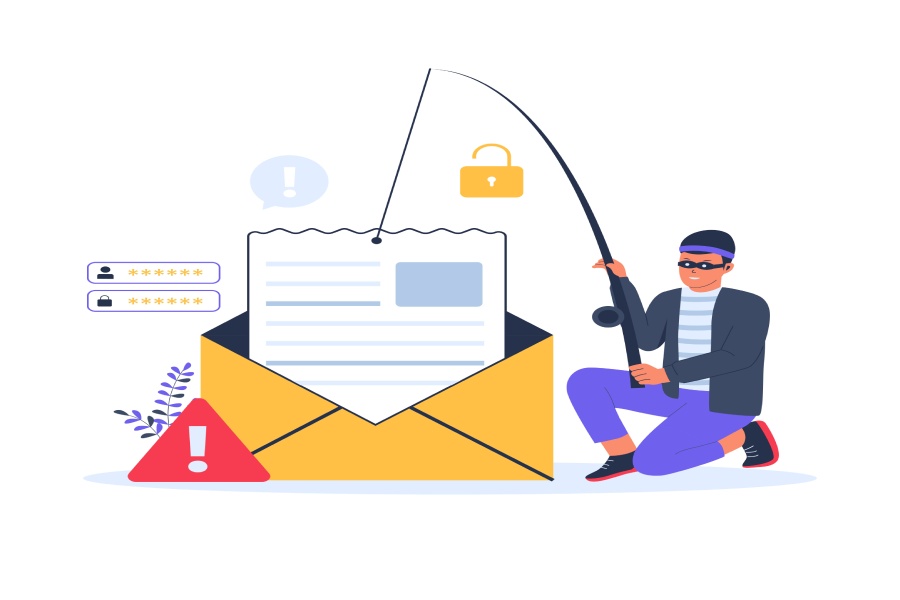Phishing is one of the oldest forms of social engineering, which malicious actors use to extract critical information from users. And online payments have their share of phishing threats to handle. While many businesses move to the virtual world to reach more customers and make transactions smoother, malicious actors find a massive opportunity in it to exploit associated data. As organizations use more sophisticated anti-phishing solutions, threat actors also develop bolder methods to take advantage of the payment systems.
Eye-opening Statistics
Despite the increased use of sophisticated tools like anti-malware and anti-ransomware solutions, businesses still have to endure their share of online threats. The below graph shows that the online payment systems alone face nearly a tenth of all phishing attacks. While providing businesses with an advantage, online payment has also been one of the reasons for security managers’ sleepless nights.
How Has The Rise of Online Payment Boosted Online Crime?
The rise of the digital medium has been relatively quick. The internet is not a very old institution. Still, over the past few decades, it has created a stranglehold over people. Given the ease of business and the comfort it provides, entire industries have been built around it. The online payment industry is one of those that have benefitted from the spread of this technology. However, most of the world’s population lacks the requisite awareness regarding the strength of malicious actors and how they interfere in business transactions. Moreover, phishing entails creating a lucrative website, peddling attracting deals and discounts, which can trap most users. The rapid rise of online payment has therefore given threat actors a field day to exploit ample opportunities.
Another major reason has been the reluctance of many business organizations to invest in advanced phishing protection methods and IT Security. Legacy systems fail to fight the rigors of modern adversaries and crumble easily. It consequently necessitates a complete overhauling of the necessary hardware and software applications.
Ways For A Business to Protect Itself From Phishing
Loopholes in payment channels can cause losses to a business directly and indirectly. If a malicious actor manages to access the business database, it can result in an impending disaster. Even if they manage to fool the customer who uses the online payment of an organization and steals their confidential data, it still affects the reputation and trustworthiness of the business organization. Hence, they have to prioritize securing their systems and payment channels with safeguards such as mentioned below.
Upgradation of Systems
This action is a must, given the propensity with which malicious actors find ways to access information not meant for them. Email phishing protection, anti-ransomware, and malware protection solutions are available in the market in many forms. Some of the best phishing protection tools may not cost a fortune and yet do their job efficiently. Enterprises need to move away from traditional security practices to agile, modern ones.
Creating Awareness
This method is always the foremost to counter phishing attempts. Most of the incidents take place because of the ignorance of the users. They fall prey to phishing emails, most of which talk about donations, sales, and discounts. These websites are created to excite the human psyche and lure them. Emails asking for donations, especially in COVID times, create a sentimental environment by explaining how the pandemic has affected millions worldwide. Terms like poverty and livelihood are used to push the emotional button. It forces the victims to forget about the safety factor.
By being aware of phishing techniques, users will be careful while surfing the virtual world. Most business organizations have regular cyber awareness sessions for their employees and beneficiaries, highlighting instances and the changing cyber threat landscape. Businesses neglecting awareness creation are bound to suffer more.
Deploying Two-Factor Authorization (2FA)
The rise of online fraud has necessitated this step called TFA or Two-Factor Authentication, wherein the user has to undergo a two-step process to log in. Usually, in this form, an OTP is sent to the user’s registered mobile phone when logging in. To access the account, the malicious actor will need to have both the password and the phone, the probability of which is minimal.
3DS Layers
It is also known as the 3-Domain Secure Layer, where merchants and banks interchange the data provided by the customer for authentication. In this process, an OTP is generated to authorize the transaction. It prevents the malicious intruder from being able to get access to any information about the user.
Online Payments And The Rise of Phishing Attacks: A Business Perspective
Organizations will have to build and deploy solutions that will go a long way in controlling the fallouts by minimizing, if not entirely eradicating, the effects of phishing. The market for email phishing protection is a burgeoning one, and with the march of technology, it will further expand. The sheer sophistication of malicious actors has forced IT Security providers to widen their research, and an increased focus and investment is the need of the day. Employing the most sophisticated tools for the best phishing protection is now the prime responsibility of every organization.
It is incorrect to limit safety to only data since consumer privacy is also a vital cog in the wheel. The inherent flaws that systems develop over a period will have to be replaced with more robust tools if the future of online payment has to be secured.
Final Words
One of the vital questions regarding cyber fraud has always been how to stop phishing emails. Organizations, both financial and e-commerce, and every other entity that allows online payments, will have to adopt a multi-pronged strategy to counter the menace of phishing. The above article has discussed the most critical steps that need to be taken to prevent oneself from falling victim to any form of phishing email examples.



